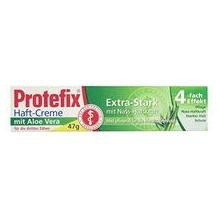Electric toothbrush purchasing advice: how to choose the right product
- What you need to know
- Electric toothbrushes remove harmful plaque, bacteria, and food particles more thoroughly than any manual toothbrush.
- In addition to the classic rotating-oscillating toothbrushes, there are also sonic and ultrasonic devices on the market.
- Besides the highest possible vibration frequency, it is also important to have good battery performance, various cleaning programmes, and, depending on requirements, other extras for cleaning comfort.
- For an ideal cleaning, not only the right toothbrush is decisive, but correct handling as well.
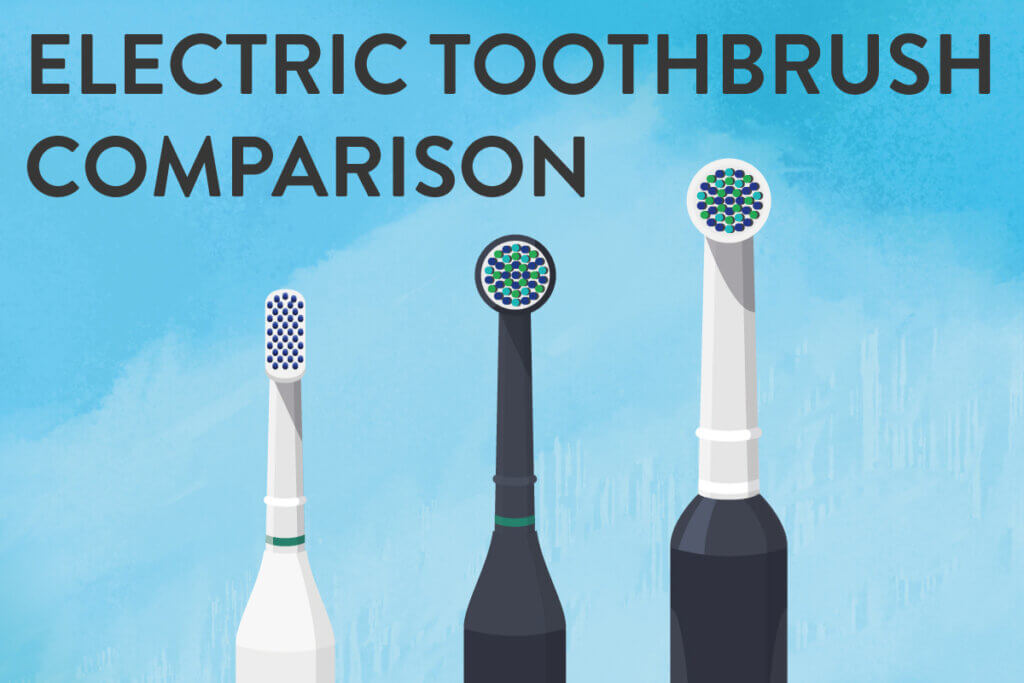
Investing in your dental health
Dental hygiene is absolutely vital. Bad teeth can tremendously limit your quality of life. Not only because bad teeth cause pain and some foods can no longer be eaten, but also because inflammatory processes in the mouth can become dangerous to your health in general. A thorough dental cleaning is indispensable, if nothing else, for aesthetic reasons, because a radiant smile is usually a guarantee for a great first impression. After all, everyone wants healthy pearly whites. This requires not only regularly brushing your teeth, but also doing it with the right toothbrush. Optimal cleaning can be achieved with an electric toothbrush — at least when used correctly. Especially morning grouches are well advised to use electric toothbrushes. They promise convenient, thorough, and efficient dental care.
Electric toothbrush vs. manual toothbrush: who does a better job?
Electric toothbrushes basically consist of three parts:
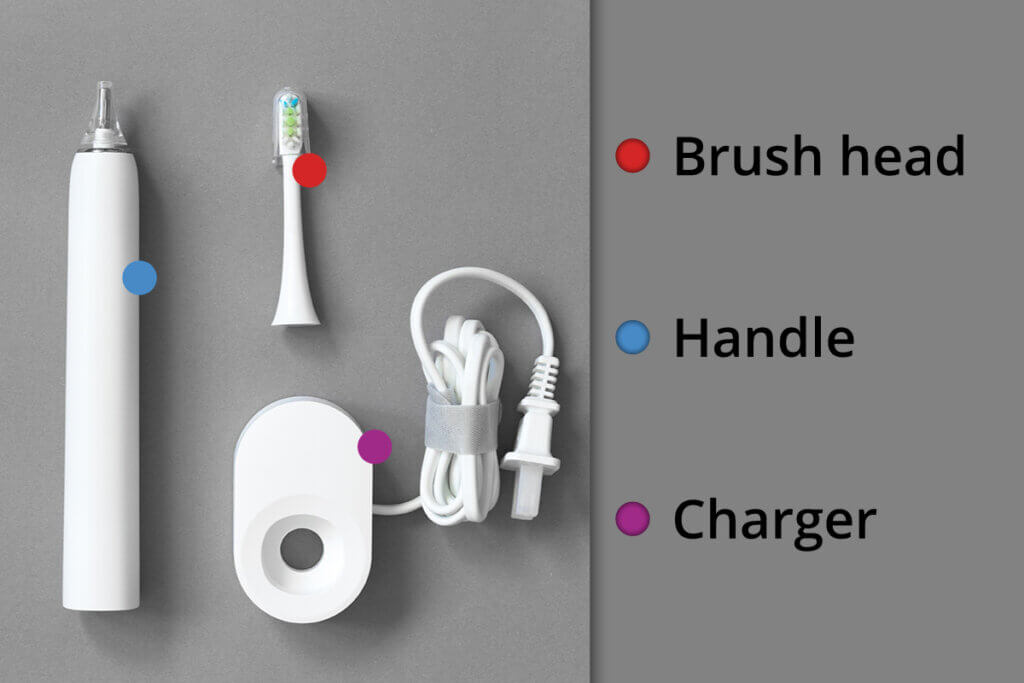
- Brush head: The brush head of an electric toothbrush is replaceable and either circular or oval in shape.
- Handle: Here you will find the battery and, depending on the model, a display with charge level, a timer, or a power button.
- Charger: In the case of electric toothbrushes, they are used both for charging and as storage place.
Electric toothbrushes should not only make dental care easier, but also ensure a better cleaning result. But are they really better than the classic manual toothbrushes? A good cleaning is also possible with a manual toothbrush, but just as with the electric version, the correct brushing technique is imperative. Electric toothbrushes take some of the “brushing work” off your hands, as they take over the movement of the brush head to a certain extent. Your hand thus remains a little more relaxed and leaves most of the job to the electric brush. This makes electric toothbrushes a real alternative to manual toothbrushes and offers some other interesting advantages as well.
Thanks to their rotation and the sonic technology of some, electric toothbrushes clean the surfaces of the teeth as well as the interdental spaces and remove harmful plaque much more thoroughly than conventional hand brushes. This is due to the fast, optimally rotating movements, but also due to the good results in the rear, hard-to-reach areas. On top of that, a timer reminds you of the optimal cleaning time. Contrary to what is often assumed, however, electric toothbrushes do not save time when brushing, because the recommended brushing time of two to three minutes should also be adhered to here.
Depending on the price category, electric toothbrushes offer even more practical extras that give them a clear advantage over conventional manual toothbrushes. For example, they help you clean more evenly by signalling when it’s time to change sides. To avoid too much pressure during the brushing process, high-quality models have a pressure sensor that prevents injuries to the gums and abrasion of the enamel. Their particularly gentle brushing technique combined with their easy handling reduces the risk of gum inflammation. Thanks to the different brush heads, they are also very flexible. So switching to an electric toothbrush is definitely worthwhile. Anyone who wants to give their teeth and gums particularly intensive and at the same time gentle care is sure to find the right model for them in the wide range of prices and brands.
Advantages
- Effortless brushing thanks to rotating movement
- Thorough cleaning of the tooth surfaces and interdental spaces
- Effective removal of plaque
- Reminder of ideal cleaning time by timer
- Good results even in hard to reach areas
- Signals when it’s time to change the area
- Lower risk of injury due to pressure sensor
- Flexibility thanks to different brush heads
Disadvantages
- High acquisition and follow-up costs
- Energy consumption
Which brands have the “cleanest” record?
Due to their convincing performance, electric toothbrushes are becoming increasingly popular in private bathrooms. Nowadays, the prices for good models are moderate. But of course, compared to manual toothbrushes, which you can find for as little as $0.50 to $5.00, they are still a far bigger investment. However, most low to mid-priced models can already compete with the high-priced products in terms of cleaning performance. Still, if you don’t go for a luxury model, you’ll have to make do without a few additional features. Naturally, premium brushes are of a somewhat higher quality too. Together with a stronger battery, this leads to more long-lasting toothbrushes.
The huge price range for electric toothbrushes is not only related to the different battery capacities, but also to the range of features. No-name products are available for as little as $15, but you’ll pay at least $20 for decent models. The Oral-B 2000 and the Sonicare EasyClean have a very good price-performance ratio. For around $50, they offer the most important functions such as a timer, reasonable battery performance, and good cleaning power. However, they do without extras such as a whitening mode or special sensitivity settings. In the medium price range of $60 to $80 you can find the Oral-B 3000, the Sonicare Healthy White, and the Panasonic EW-DE92, which are a reasonable compromise between optimal cleaning performance and certain comfort functions such as additional cleaning modes. Top models from the market leaders, such as the Oral-B Genius 9000 or the Flexcare Platinum from Sonicare, justify their prices of over $100 with various additional functions that help with daily dental care, such as position detection.
The cleaning technologies
The search for the right toothbrush is often more difficult than one would expect, as the market has become quite overwhelming. Due to their similar names, the different models are hard to tell apart. Currently, a distinction is made between three different technologies: In addition to the usual oscillating brushes, there are also sonic or ultrasonic models on the market.
The classic: rotating-oscillating toothbrush
Classic rotating-oscillating toothbrushes are generally cheaper than sonic or ultrasonic toothbrushes. Their small, round brush head is driven by an electric motor that rotates it alternately clockwise and anticlockwise between 4000 and 8000 times per minute. In addition, it often buzzes back and forth up to 40,000 times per minute. This effectively loosens and removes even stubborn plaque.
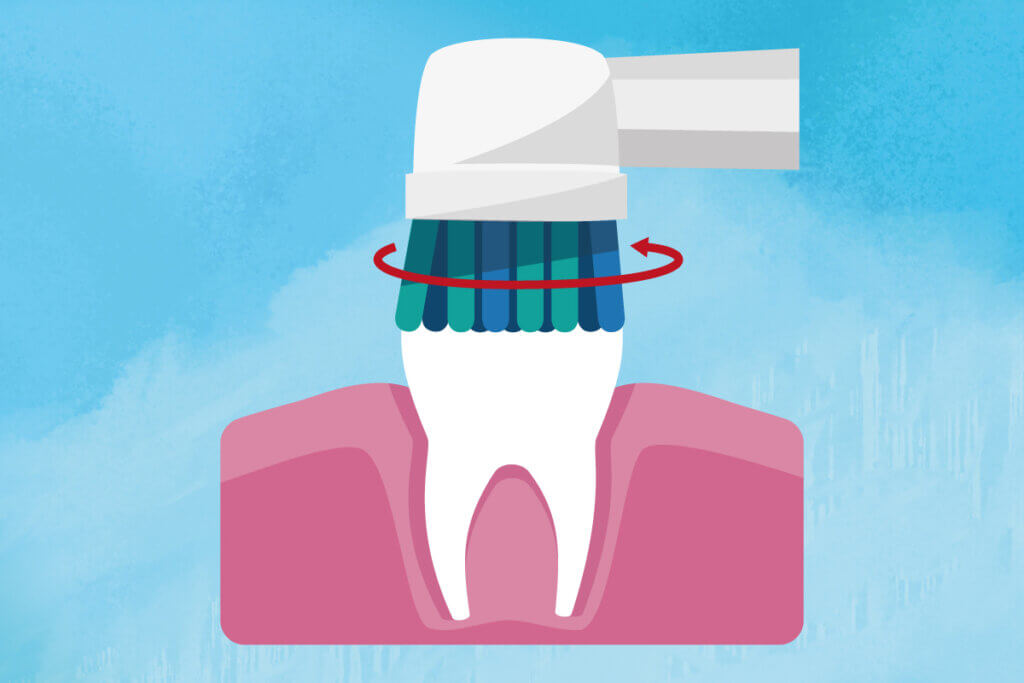
For cleaning, you simply hold the brush against one tooth for a few seconds with light pressure and then move to the next one. Thus, no further movement is necessary as with manual toothbrushes. Since they can also clean hard-to-reach places thoroughly in this way, meticulous cleaners in particular get their money’s worth. The risk of injury to the gums is higher than with the sonic versions due to the rotation, but pressure sensors often compensate for this. The interdental spaces are therefore not cleaned especially thoroughly with this type.
Advantages
- Many affordable models
- Effective plaque removal
- Simple, convenient use
Disadvantages
- Risk of gum injury due to excessive pressure
- Patience required as each tooth is cleaned individually
The thrifty: sonic toothbrush
For electric toothbrushes with sonic technology, you have to dig a little deeper into your pockets. Although a sonic toothbrush, unlike the rotating models, doesn’t perform any oscillating movements, it is still sufficient to run it along your teeth with little pressure in light circular movements. With the help of a piezoelectric transformer, electric toothbrushes with sonic technology generate between 30,000 and 60,000 side to side movements per minute. These aren’t actually sonic waves, but vibrations at a very high frequency. The movements occur so quickly that sonic waves are created, which generate a buzzing. The process loosens and removes plaque even more effectively, resulting in a more thorough cleaning result than with the rotating models. On top of that, sonic toothbrushes consume less power than electric ones, which is why they need to be charged less often.
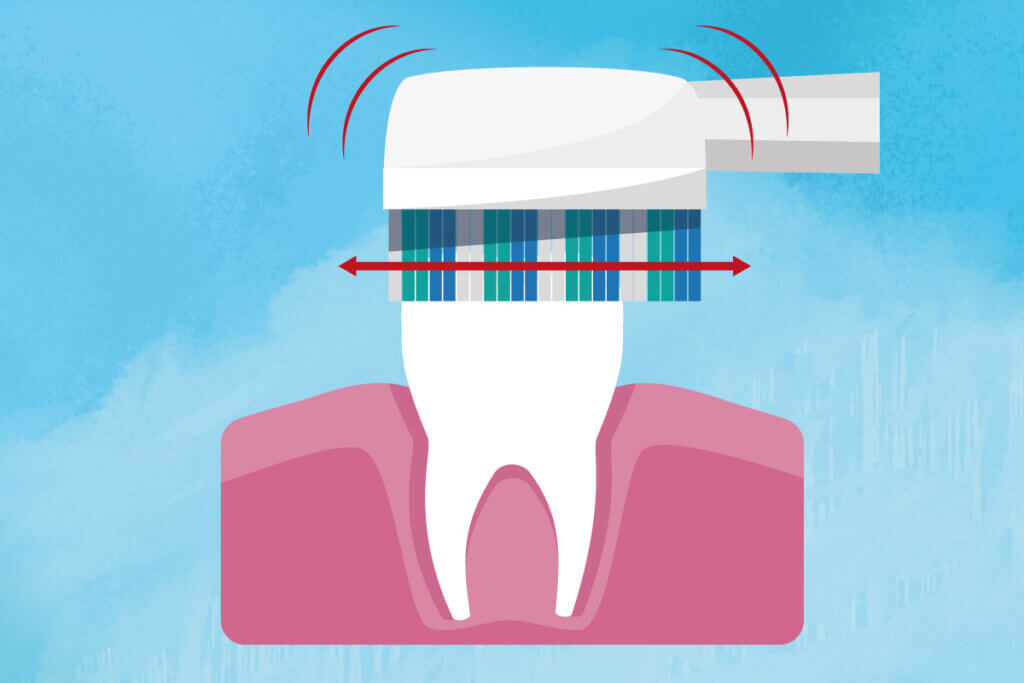
As they are somewhat more convenient and, above all, work more gently, they are particularly suitable for sensitive teeth, sensitive gums, and braces. The slightly larger, oval brush heads are reminiscent of manual toothbrushes and make handling in the back of the mouth a little more difficult. But this also means that they clean several teeth at a time, which is ideal for impatient people. The sonic waves even clean hard-to-reach interdental spaces. However, newcomers might need some time to get used to this type of toothbrush.
Advantages
- Better cleaning than rotating toothbrushes
- Cleaning of several teeth at once
- Gentle on teeth and gums
- Low power consumption
Disadvantages
- Higher acquisition costs
- Back teeth harder to reach
The gentle: ultrasonic toothbrush
Ultrasonic toothbrushes are the latest, high-priced development of sonic toothbrushes. On the outside, they resemble sonic toothbrushes, but work with much higher frequencies of several million vibrations per minute and don’t come into direct contact with the teeth or gums. In this way, they clean particularly gently, which makes them ideal for people with very sensitive teeth, periodontitis, and dental restorations, such as dental crowns, bridges, or implants. Although they don’t perform better than conventional electric toothbrushes in terms of plaque removal, they are an alternative worth considering for consumers with health problems.
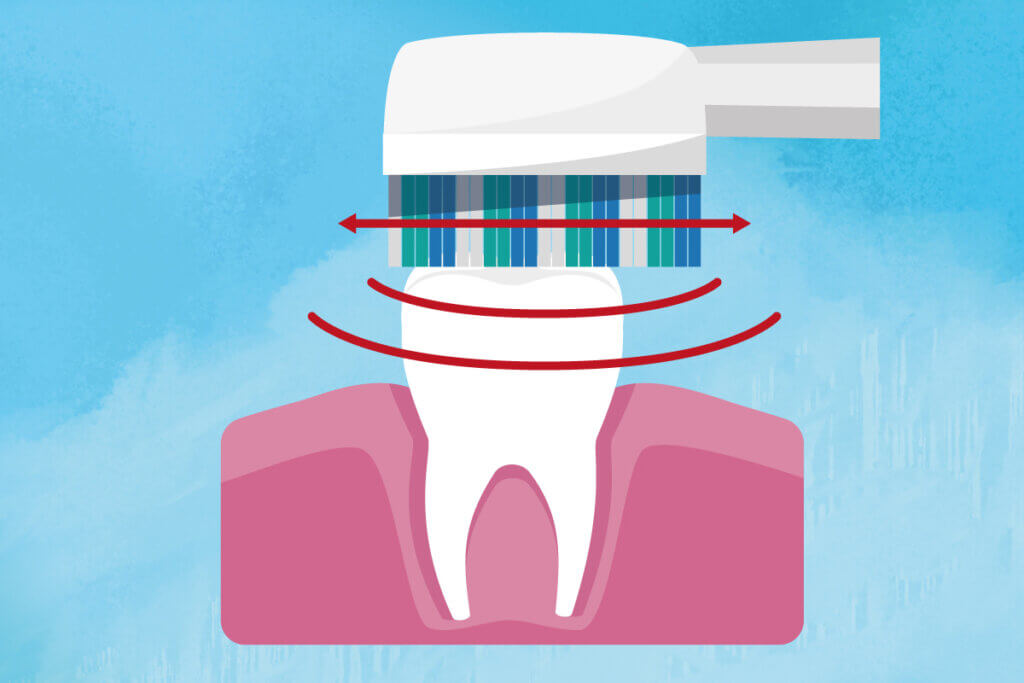
The cleaning is not achieved mechanically, but via thousands of small, bursting foam bubbles that remove bacteria and impurities on and between the teeth. This requires special toothpaste. Operation requires a little practice and, above all, patience. Instead of scrubbing over the teeth, you simply hold the brush against the tooth surface and wait about ten seconds before moving the brush head to another spot. As a result, the procedure takes more time than the recommended two minutes, namely five to six minutes, which means they’re not ideal for impatient people.
Advantages
- Thorough removal of bacteria and food residues on teeth and in interdental spaces
- Gentle treatment of sensitive teeth
- Contactless cleaning ideal for obstacles in the mouth
Disadvantages
- High acquisition and follow-up costs
- Expensive, special toothpaste required
- Longer cleaning times
Purchase criteria for a brilliant smile
In addition to the cleaning technology, criteria such as the battery life or the vibration frequency also play an important role in the selection of a suitable electric toothbrush. Furthermore, there are not only models with round or oval brushes, deep cleaning or whitening function, but even toothbrushes with Bluetooth connectivity. While inexpensive devices usually only have two speed levels, high-end products offer a variety of cleaning modes as well as various additional features such as timers or warning functions. But which functions are really useful, and what is ultimately important when buying?
The battery
Most electric toothbrushes nowadays have a rechargeable battery, but some cheaper models still rely on disposable ones. These models don’t need a charging station, which is advantageous when travelling. However, very few of these models can match the performance of rechargeable toothbrushes. And you’d also have to keep in mind the follow-up costs for fresh batteries. Rechargeable toothbrushes must be recharged regularly with the charger that you simply plug into a socket. More and more models use USB cables so that you can even charge your toothbrush on a computer.
In continuous operation, the battery life should be at least 30 minutes, so that it is easily possible to brush teeth for over a week without having to recharge the toothbrush. High-priced models even last up to three hours. However, battery performance usually drops over time, so that after one or two years, the battery may only last for three days. In any case, a battery indicator is recommended so that you’re not confronted with an empty battery out of the blue.
Apart from the duration, the type of battery installed should also be taken into account. The most common technologies are nickel-metal hydride (Ni-MH), lithium-ion (Li-ion), and lithium-polymer (Li-Po) batteries. In particular, modern and longer-lasting lithium-ion batteries are recommended, which, unlike nickel-metal hydride batteries, have no memory effect. This means they lose their maximum capacity by being repeatedly recharged after being only partially discharged. Furthermore, lithium-ion batteries stand out with long runtimes of up to three weeks (Ni-MH batteries only last 5 to 10 days). Their loading time is comparatively short: it’s between 8 and 18 hours, whereas Ni-MH batteries need between 18 and 24 hours.
Need for speed: the vibration frequency
One of the most important indicators of good cleaning performance of electric toothbrushes is their vibration frequency. As a rule: the higher the vibration frequency, i.e. the more movements the brush head makes per minute, the better the cleaning. Thanks to the high-speed movements including side to side movements, the bristles create a dynamic flow of liquid, allowing the toothbrush to penetrate deeper into the interdental spaces and to optimally clean even hard-to-reach areas. High sonic frequencies ensure particularly thorough plaque removal.
While rotating-oscillating devices only work with a frequency of 73 Hz, i.e. 4400 oscillations per minute, and in some cases a pulsating movement with 333 Hz, which corresponds to about 20,000 oscillations per minute, sonic toothbrushes achieve much higher frequencies. Ordinary sonic toothbrushes, for example, vibrate at a frequency of 250 to 350 Hz, about 15,000 to 21,000 vibrations per minute, ultrasonic toothbrushes even at up to 1.6 megahertz, that is 96,000,000 vibrations per minute.
Massaging, whitening, caring: the cleaning modes
Premium appliances in particular are equipped with up to eight different cleaning modes. For example, the Oral-B Pro 7000 has six cleaning modes, namely “Daily Clean”, “Gum Care”, “Sensitive”, “Whitening”, “Deep Clean”, and “Tongue Cleaning”. Other manufacturers equip their toothbrushes with a “massage” or “polishing” mode. Normally, a single cleaning mode is quite sufficient. However, the different modes make it possible to adapt to individual needs. People with sensitive teeth, for example, benefit from a sensitive mode with reduced rotation and vibration. All other modes can also be considered a convenient addition. For instance, the timer for the so-called deep clean simply runs for three minutes instead of two.
The brush: a matter of taste
The selection of brushes for electric toothbrushes is wide-ranging in terms of size, color, shape, and hardness, so that everyone can find their perfect type. Brushes can be easily replaced, as they are sold separately. While rotating-oscillating toothbrushes have rather small but usually thicker heads, sonic models have longer, yet thinner brush heads. While larger cleaning heads reach more tooth surface at once, smaller brushes are better at reaching the hard-to-reach places, such as the back of the mouth. Heads for ordinary rotating-oscillating toothbrushes are usually cheaper than those for sonic and ultrasonic toothbrushes. You pay between $3 and $10 per head, depending on the model.
In addition to different degrees of hardness, such as extra soft bristles, there are also various degrees of cleaning, i.a. special rubber inserts for polishing the tooth surface. Oral-B offers brushes with the names “Sensitive”, “Dual Clean” or “Power Tip”, among others. The “cross-action” brush, for example, encloses each tooth individually with angled bristles. To appeal to individual preferences and offer something for the whole family, the attachments also come in different colors, be it blue, yellow, or pink.
The accessories included
In addition to the basic equipment including handle, brush head, and charger, there are further accessories, depending on the price, which are either already included or can be purchased separately. Usually several extra brushes are included with the purchase. Some models even come with a second handle, which is particularly advantageous for families or couples. But this can also serve as an inexpensive replacement brush or travel toothbrush for singles. With the right travel case, the toothbrushes can be transported safely and above all hygienically.
Other useful functions
Nowadays, electric toothbrushes are equipped with numerous additional functions that are more or less useful depending on your needs. Features like timers and pressure sensors signal mistakes we usually make when brushing our teeth. The main price drivers are Bluetooth connections with external displays for the bathroom that show, among other things, the remaining cleaning time or the quadrant to be cleaned. After all, such a feature is useful for children who are learning to brush their teeth on their own and might need a playful as well as educational component.

Timer
Almost every electric toothbrush has a two-minute timer that vibrates briefly after the time has elapsed or alerts you by sound or light signal that the minimum brushing time is over. This means you don’t have to keep an eye on the clock. Other devices simply switch off after two minutes, so that you have to switch the toothbrush on again if you want to continue brushing. Some models additionally offer an interval function that notifies you every 30-second sections to clean all four quadrants of the teeth evenly. With a short interruption, the toothbrush signals that the area needs to be changed.
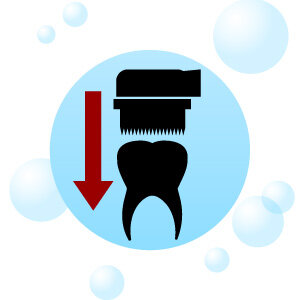
Pressure control
A pressure control is particularly useful for anyone who tends to apply too much pressure when brushing their teeth. In the long run, this can cause the gums to recede and expose the necks of the teeth. This function alerts you — for example with the help of smileys, vibrations, or light signals — that you’re pressing the brush too hard against your teeth; other models interrupt the brushing process completely. Especially beginners or users of oscillating toothbrushes are well advised with such a function.
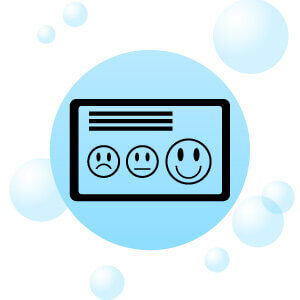
SmartGuide
Smart toothbrushes connect wirelessly via Bluetooth to an external display, the SmartGuide, or a smartphone. On the additional screen, you can see how much time has passed, which mode is activated and whether you’re pressing too hard. Afterwards, you sometimes even receive a star rating. Some manufacturers create an individual brushing schedule, remind you to brush regularly or recognize the position in the mouth with the help of a smartphone camera, so that you know immediately whether an area is being neglected.
Optimal oral hygiene
You don’t automatically clean better with an electric toothbrush. It is not uncommon for wrong handling to have a negative impact on the brushing, which can even be detrimental to dental health over time. Regardless of the model, it ultimately comes down to the correct use of the electric toothbrush.
Brushing properly with an electric toothbrush
For an optimal cleaning, it is not sufficient to have the movements performed automatically. In addition, you have to operate the brush head manually… and with the right technique. Although an electric toothbrush reduces the risk of gum injuries thanks to its ease of use, there are still one or two aspects to consider:
- Divide the whole procedure into four areas (or quadrants) to clean each for 30 seconds.
- Moisten the bristles and put a pea-sized amount of toothpaste on them.
- Place the brush head on the teeth with light pressure at a 45 degree angle, starting with the chewing surfaces of the first quadrant.
- Switch on the (rotating) toothbrush only in the mouth to avoid splashes.
- With a rotating brush, hold the bristles against each tooth for a few seconds, perform a wiping motion with a sonic toothbrush or move the ultrasonic brush along the teeth at a small distance.
- Clean the outer surfaces first and then continue with the inner surfaces of the first quadrant.
- Repeat the procedure for the other three quadrants.
- Finally, clean the brush head under running water.
In order to devote sufficient time to each tooth, it takes at least two to three minutes in the morning and also in the evening. Besides that, the brush head should be changed every two to three months, partly for reasons of hygiene and partly for wear and tear. Apart from that, the head should also be changed after an illness, such as a cold.
In any shade of color: electric toothbrushes for children
Already from the age of 2.5 to 3 years, it’s advisable to use an electric toothbrush. Most manufacturers offer special children’s toothbrushes with smaller brush heads, fewer revolutions, and hardly any additional functions. Children often find the lower frequency more pleasant. In addition to the classic models in white or black, there are also designs made for children in a number of colors and with motifs such as superheroes or cartoon characters, so that brushing teeth becomes more fun. Electric toothbrushes for children compensate for the not yet fully developed motor skills of children’s hands. Some models even play tunes or use smileys to signal the end of the brushing time. Soft brushes are important here to protect the sensitive milk teeth, as well as appropriate handles.
Is there a higher risk for bleeding gums?
Electric toothbrushes are no threat to health, but are even gentler than manual toothbrushes. At least as long as you pay attention to the right amount of pressure applied. Some models therefore have the “Sensitive” cleaning mode, which is ideal for particularly sensitive gums due to less powerful rotations. Besides that, there are gentle brush heads with extra soft bristles. Ultrasonic toothbrushes are particularly suitable for gum problems. Although switching from a manual toothbrush to a rotary toothbrush may initially cause some gum bleeding, after one to two weeks the gums should have become accustomed to the new brushing sensation and adapted accordingly. However, if the bleeding gums last longer, it is advisable to see a dentist.
Can electric toothbrushes be used with braces and implants?
Electric toothbrushes are usually not a problem for braces and implant, but this must be tested beforehand. On the contrary: they are even particularly effective for these conditions. Sonic toothbrushes are particularly recommended here, as their very high speeds thoroughly remove plaque and bacteria from interdental spaces. In addition, you should still use dental floss or interdental brushes once a day.
Image 1: © FinalCheck | Image 2: © Olha Kozachenko / stock.adobe.com | Images 3-8: © FinalCheck

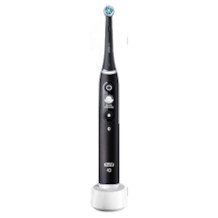
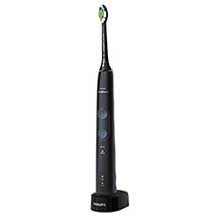
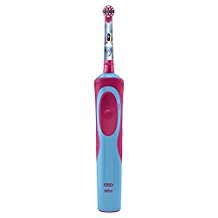
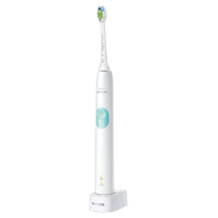
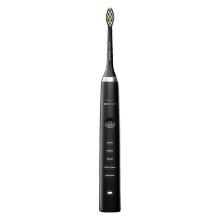
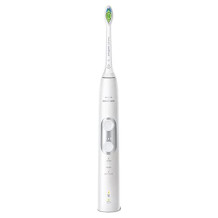
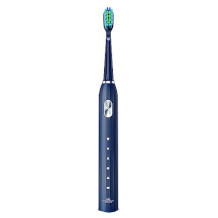
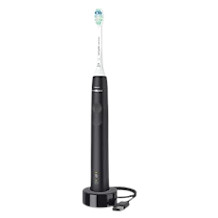
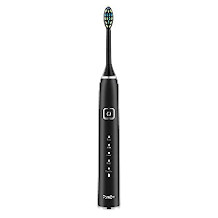
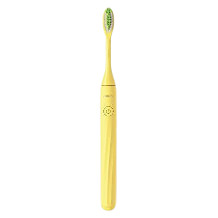
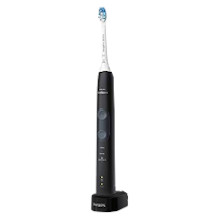
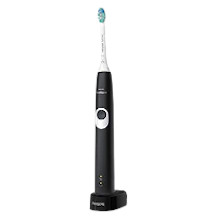

 2,247 reviews
2,247 reviews


